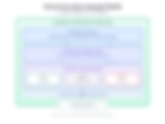COMPLIANCE
SEARCH
Find what you need
139 results found for "Model"
- A Safety Model for AI Systems
As a framework, I thought Nancy Leveson’s Hierarchical Safety Model which incorporates Rasmussen’s risk The following diagram is a slightly modified version of her model outlining engineering activities across
- Compliance Process Modeling
Process modeling is necessary to design, implement, and improve compliance. In this blog, I will look at how the Activity Model compares with the Phase-Gate Model which is used Activity Model Activity based models typically diagram the process using flow charts containing: boxes Phased-Gate Model This modeling technique is based on a state driven approach depicting the life cycle benefits of the using the phase-gate model.
- Manufacturers Integrity: A model for AI Regulation
While this model provides a framework for higher levels of safety and quality it requires manufacturers Conclusion In conclusion, the concept of manufacturers' integrity and self-regulation emerges as a crucial model This model emphasizes the need for manufacturers to establish internal governance, programs, systems,
- Capabilities Maturity Model for Compliance
have observed that regulatory and standards bodies are expecting companies to use capability maturity models While capability maturity models are not new they have seldom been used to improve compliance. One of the places where capability maturity models has been used successfully is in software development The CMMI (Capabilities Maturity Model Integration) Institute publishes and develops maturity models continuing The latest version of the CMMI model is V2 with specific versions for product and service development
- Exploring Potential Assurance Models for AI Systems
Currently, the AI field lacks established frameworks for comprehensive assurance, but several existing models management, and medical device life-cycle management could be adapted to create an effective AI assurance model If adapted for AI, this model could include threat modelling, attack surface analysis, and security control With AI-specific threat detection and control mechanisms, this model could serve as a proactive defence and Medical Device models both emphasize life-cycle management.
- Model Convergence: The Erosion of Intellectual Diversity in AI
As artificial intelligence models strive for greater accuracy, an unexpected phenomenon is emerging: requesting an outline on a specific topic typically yields nearly identical responses from these different models Model convergence occurs when multiple AI models, despite being developed by different organizations, The convergence of AI models towards singular responses could potentially limit the exposure to alternative Do you think model convergence is a problem?
- Governing Large Language Models - A Cybernetic Approach to AI Compliance
The challenge with Large Language Models is that traditional compliance approaches assume you can audit the black box transparent, we focus on governing what we can actually control: what goes in, which models
- Mapping KPI, KRI, and KCI to the Bowtie Risk Model
Integrating these essential metrics into the Bowtie Risk Model offers a powerful framework for evaluating This article will delve into the process of mapping KPIs, KRIs, and KCIs to the Bowtie Risk Model to Understanding the Bowtie Risk Model The Bowtie Risk Model is a visual and qualitative risk analysis tool Mapping KPI, KRI, and KCI to the Bowtie Risk Model Identify Relevant Metrics : Start by identifying the Map KRIs to Threats : Associate the KRIs with the identified threats in the Bowtie Risk Model.
- We Don’t Live in Models; We Live in Reality
With all the talk about artificial intelligence it’s easy to get caught up in a world of machine models
- Shingo Model: 3 + 1 Insights to Achieve Organizational Excellence
At the heart of the Shingo Model™ are three pivotal insights that guide organizations toward mission Elevate Systems (Lean Compliance) Insight 1: Ideal Results Require Ideal Behaviour Central to the Shingo Model Leaders are urged to inspire and model the behaviours that align with the organization's goals, fostering Conclusion The Shingo Institute’s along with the Lean Compliance Model offer profound approaches to organizational
- Understanding Operational Compliance: Key Questions Answered
Organizations investing in compliance often have legitimate questions about how the Operational Compliance Model compliance approaches—ISO management standards, GRC platforms, COSO frameworks, Three Lines of Defence models Rather than viewing these as competing approaches, the Operational Compliance Model serves as an integrative GRC (Governance, Risk, and Compliance) platforms are tools, not operational models. Traditional "Procedural Compliance" is based on a reactive model for compliance that sits apart and is
- Operational Compliance - Update
The following diagram is a vertical orientation of our Operational Compliance Model updated to better Operational Compliance Model (Updated) We use the Operational Compliance Model to ensure policy-driven The Operational Compliance Model includes built-in risk management, compliance, and governance right from the start in one integrative model. This model is best implemented using the Lean Startup approach to achieve Minimal Viable Compliance











